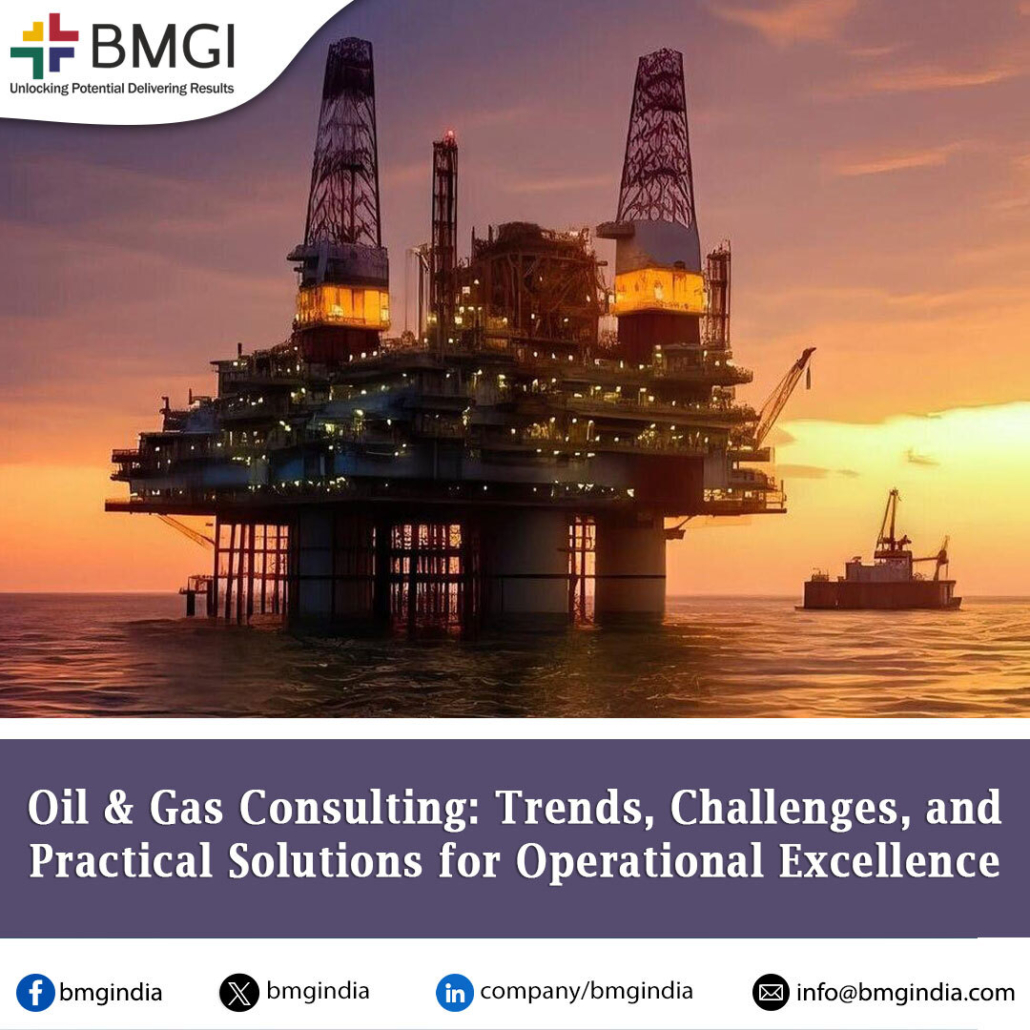Oil & Gas Consulting: Trends, Challenges, and Practical Solutions for Operational Excellence
Growing industrial activity, expanding gas usage, and population-driven demand continue to shape oil and gas across upstream, midstream, and downstream. Exploration of new fields, unconventional resources, enhanced recovery methods, and the need for skilled services are rising upstream. Midstream and downstream priorities include building transmission and distribution networks, locating refineries near markets to reduce freight and operating costs, and expanding product distribution. This article integrates terms used by oil and gas consultants, including references to oil and gas consulting companies in India, a capable Indian oil & gas consulting firm, and other experienced oil industry consultants across the value chain. It is suitable for distribution pages that reference oil and gas consulting firms in India.

Key Trends Reshaping the Sector
Shift to cleaner energy sources
Companies and governments are promoting natural gas and renewables to meet long-term needs. Demand is moving from coal and oil toward gas and other cleaner options. Transportation is shifting from gasoline to hybrid and electric vehicles. Energy-intensive industries are increasing natural gas usage while also piloting solar, wind, and other renewables. Seasoned oil industry consultants help operators model supply, demand, and infrastructure decisions tied to this shift.
Energy access and security pressures
Rapid demand growth, particularly in Asia, is outpacing local production and driving import dependence. This increases exposure to energy shocks. To balance demand and supply, interest is growing in alternatives such as Coal Bed Methane, Underground Coal Gasification, and Shale Gas. An Indian oil & gas consulting firm can support sourcing scenarios, storage strategy, and pipeline planning.
Policy momentum and investment
Economic growth and supportive policies encourage investment across the value chain. Examples include exploration licensing reforms, policies for CBM, and higher FDI limits in refining. These measures open opportunities for upstream projects, private refining, and infrastructure expansion. Many oil and gas consulting companies in India assist with policy interpretation, risk controls, and capital project governance.
Core Challenges Facing Operators
Need for operational excellence: Rising costs in exploration, development, production, and distribution, along with pressure on refining margins, make efficiency essential. Capital projects are larger and more complex, requiring better planning and execution. Heavy reliance on systems and equipment means improving availability and extending asset life. Priorities include:
- Raising Overall Equipment Effectiveness through stability and uptime
- Enhancing asset reliability to extend equipment life
- Strengthening project controls to deliver capital programs on time and within cost
Innovation and new technologies: Reducing reliance on legacy practices requires adopting breakthrough technologies and structured problem solving. Leading oil and gas consultants de-risk pilots and help scale what works without adding complexity to daily work.
Resource capacity and talent EPC workloads are rising while experienced resources are limited. Operations span remote and harsh environments with complex logistics. Building versatile technical and leadership capability is a persistent need. Experienced oil and gas consulting firms in India often support workforce planning and role design.
Practical Solutions That Deliver Results
Upstream focus
- Stabilize production by controlling critical parameters and using predictive maintenance for rotating equipment.
- Improve field development decisions with scenario planning for pads, lift, and workovers.
- Standardize shift handovers and fault-to-fix routines to reduce non-productive time.
Midstream priorities
- Balance pipeline throughput with clear control points and metering discipline.
- Strengthen loss control through daily reconciliation and leak response readiness.
- Plan terminal and logistics moves with visual schedules to reduce waiting and rehandling.
Refining and processing
- Tune process control loops, hold steady operating windows, and address root causes of variability.
- Lower energy intensity by balancing heaters, repairing steam and air leaks, and auditing insulation.
- Improve right first time quality with review-by-exception and on-spec performance tracking.
Measures That Confirm Progress
Choose a small scorecard that teams can influence:
- Unplanned downtime, mean time between failures, and mean time to repair
- OEE on the constraint asset and energy per unit of output
- Metering balance, loss events, and flare or vent frequency
- Turnaround schedule adherence and critical path delays
- First pass yield, on-spec rate, and cost per barrel or cost per ton
Bottom Line
The direction is clear. Meet growing demand, manage cost and risk, and advance sustainability. Operators that focus on operational excellence, disciplined project execution, targeted innovation, and capability building will run safer, more stable assets at lower unit cost. For distribution use, this article reflects the vocabulary and approach of oil and gas consultants, highlights where oil and gas consulting firms in India contribute, and aligns with how an experienced Indian oil & gas consulting firm or other oil industry consultants support measurable results across upstream, midstream, and refining.


Leave a Reply
Want to join the discussion?Feel free to contribute!